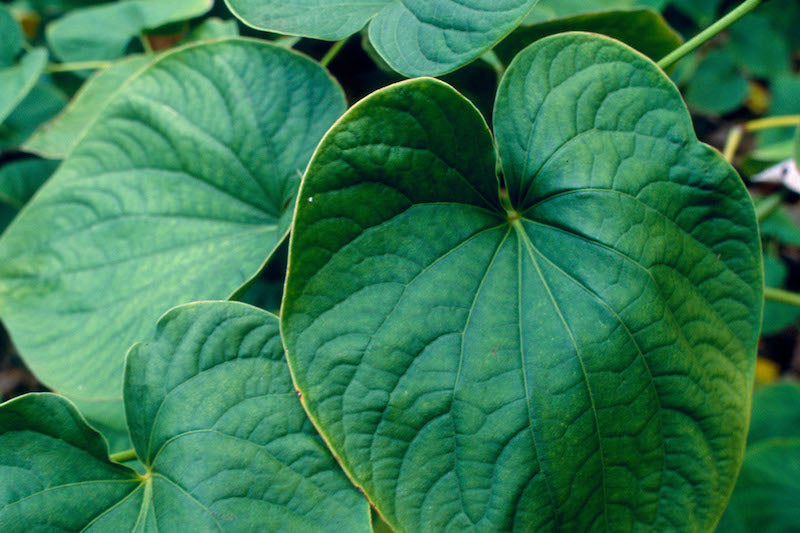Description
Kava is a perennial woody and evergreen shrub with vines that can grow up to approximately 10 feet (3 meters) in height.3 Its leaves are heart-shaped, tapering and large.3,7 The plant has yellow female and male flowers on different plants (dioecious) that are inconspicuous in oblong clusters.3,4 Female plants are rare and do not produce viable seed. The rhizome (rootstock) cortex is tan or pale greyish-brown in color, with white to yellow flesh.3,5,8 The rootstock bears lateral roots that reach up to 10 feet (3 meters) of root depth and less than an inch (2.5 cm) in thickness.4,5
Origins & History
The origin of Kava is uncertain, but scholars have speculated that it was first developed from selections made over 3,000 years ago in Vanuatu. The plant is not self-reproducing and propagation relies entirely on humans. Kava is grown across the South Pacific, including Fiji, Samoa, Tonga, Vanuatu, Papua New Guinea and Hawaii.3,4 In social ceremonies and religious rituals, Kava has a great deal of cultural significance to the indigenous people.3,6,7 It was formerly prepared as a beverage made by chewing the roots, then mixing the softened plant material with water and filtered through coconut fiber.3,6,7 Today it is more typically pulped in a meat grinder or other device, rather than by chewing, and essentially washed in water and then filtered through cloth. It is often consumed from a coconut shell and is chugged rather than sipped.
The rocky soil that Kava grows in must be well-drained and the habitat shady.3,4,7 The temperature of the growing environment of the region needs to be above the frost limit at all times and has a minimum temperature condition of 40 °F.3 To ensure continuity of the plant after the below-ground parts are pulled from the soil, the cut stems are reinserted back into the soil to regenerate their roots over time.
There are two main Kava types, noble varieties and tudei (two-day) varieties. The noble varieties, of which there are over 100, are the older varieties with a long history of human food use. Noble varieties typically have greater amounts of kavain and dihydrokavain than the other kavalactones, whereas tudei has dihydromethysticin as one of the top two kavalactones. We combine HPLC testing along with colorimetric testing to ensure the noble identity of our kava.
The FDA requires a warning for the rare occurrence of liver toxicity. Despite significant research, no mechanism of toxicity has been identified. There have been several theories over time, including the use of tudei varieties, use of leaf or stem and mycotoxins produced by molds on the dried root. Herb Pharm uses only the rootstock (rhizome) and lateral root of kava, never the stem or leaf. And we only use noble variety kava that passes testing for mycotoxins.






























